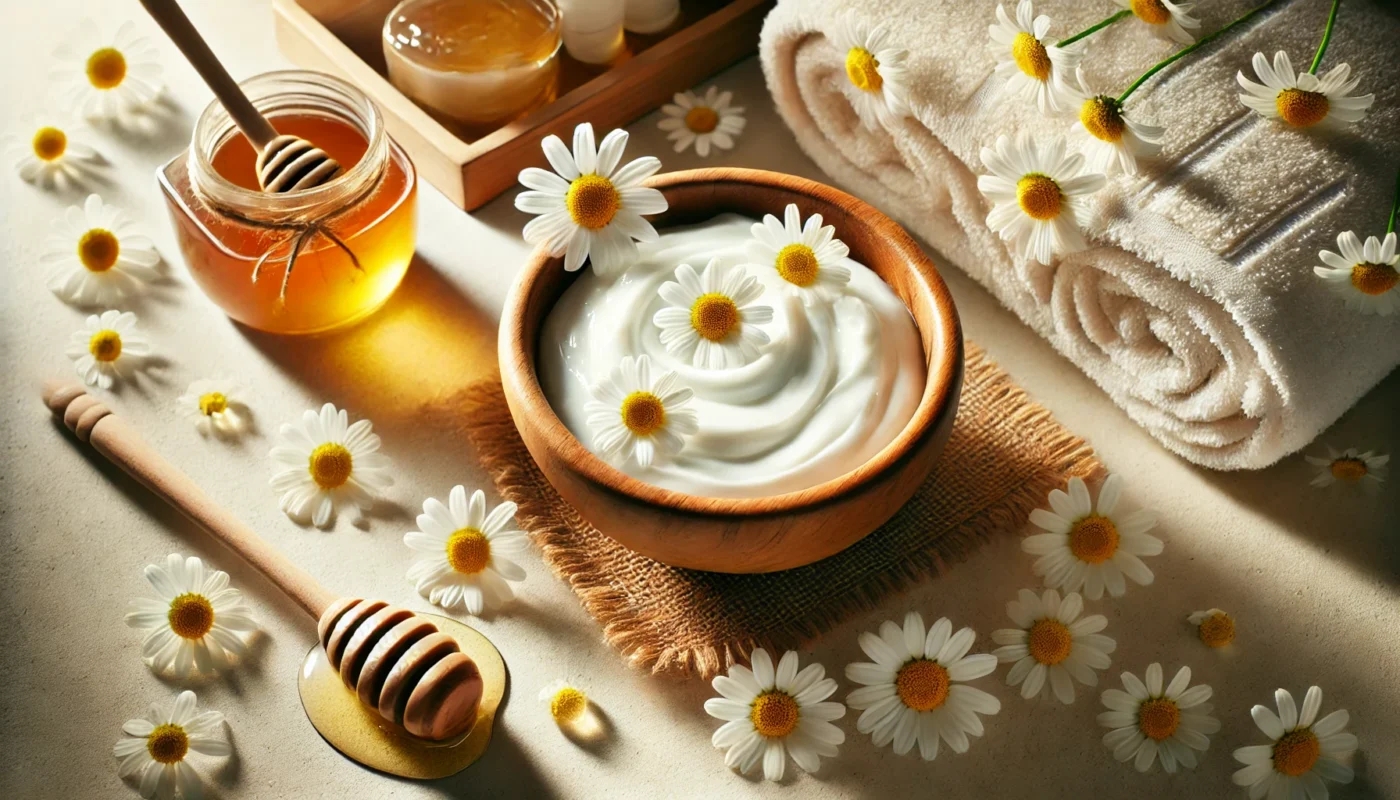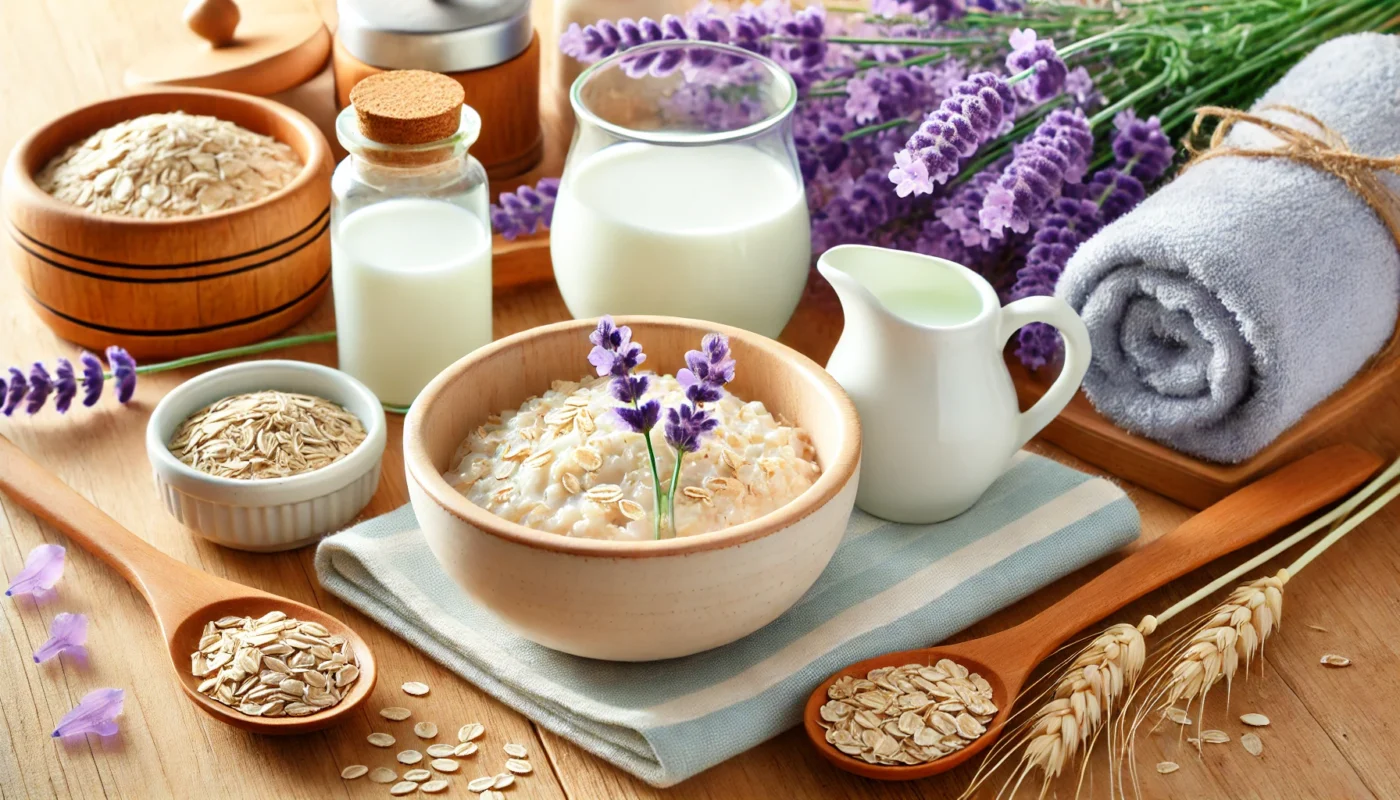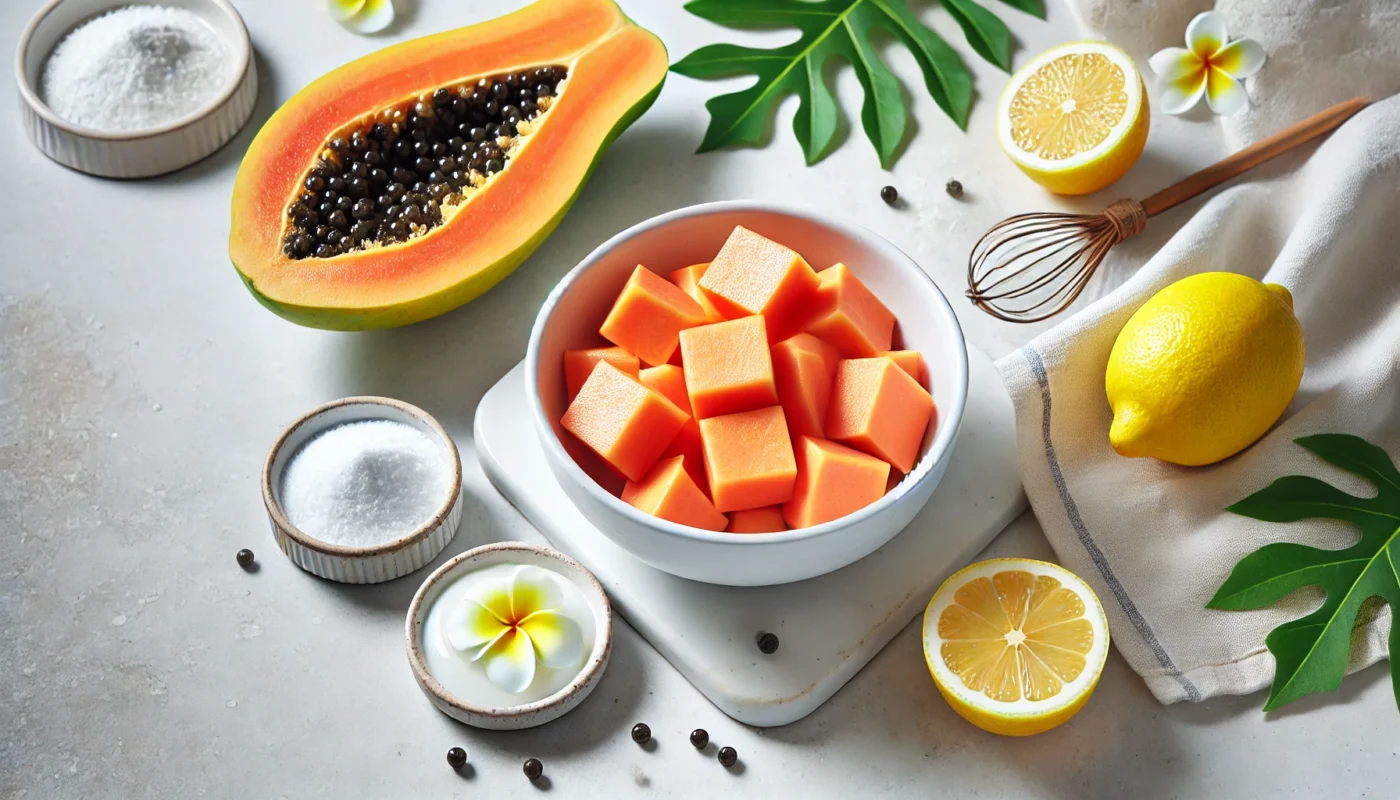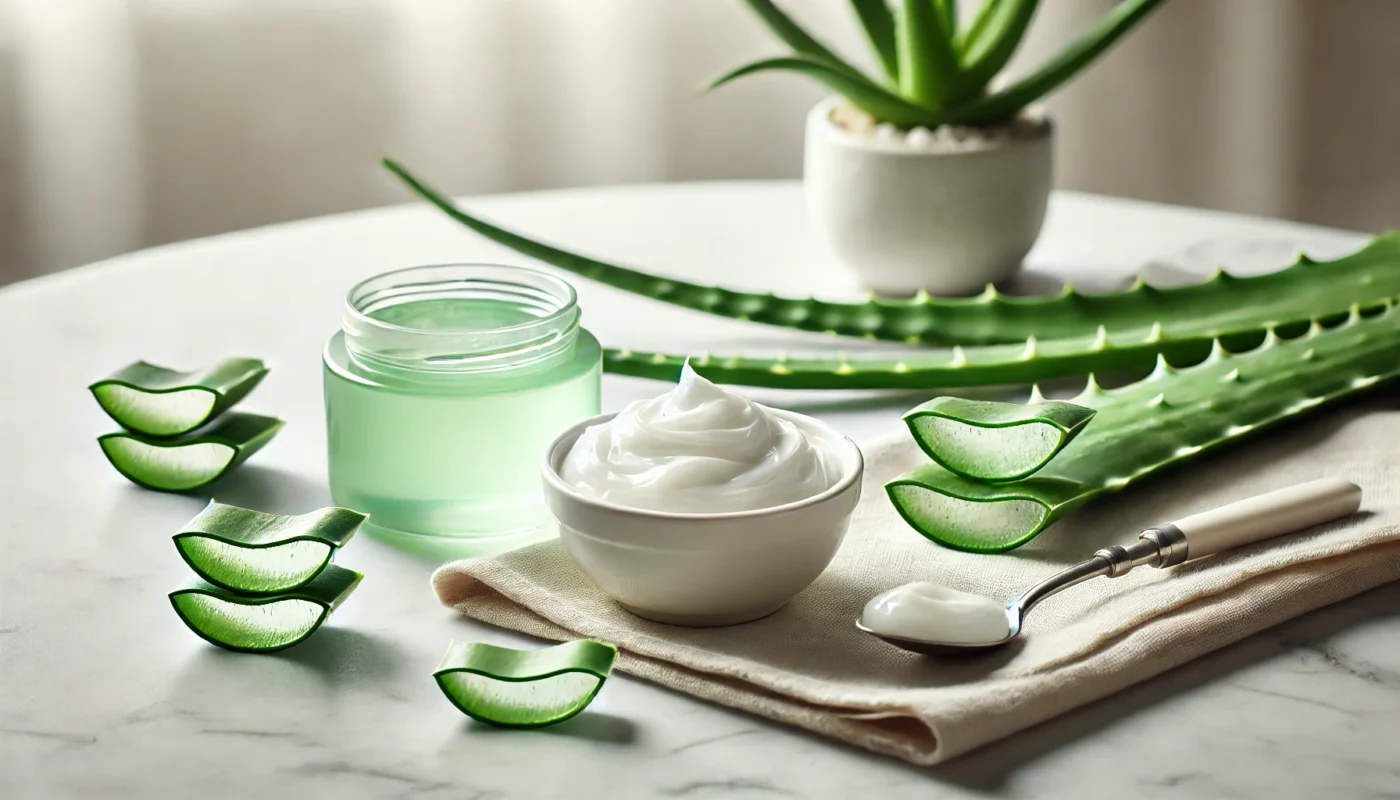When the sun’s rays leave your skin scorched and discolored, it’s not just discomfort you’re dealing with—it’s also the aftermath of sun damage. Sunburns can lead to skin discoloration, making it essential to find effective remedies for skin whitening post-sunburn. In this guide, we delve into holistic and alternative approaches to help you lighten sunburned skin and repair sun damage.
You may also like: Essential Tips for Sun Protection Daily
Understanding Sunburn and Skin Discoloration
Sunburn occurs when the skin is overexposed to ultraviolet (UV) rays, resulting in damage that can manifest as redness, inflammation, and peeling. Over time, this damage can lead to melanin overproduction, causing hyperpigmentation or dark spots. To restore your skin’s natural tone, it’s crucial to address both the immediate effects of sunburn and the long-term discoloration.
The Impact of UV Rays on Skin Health
Ultraviolet rays penetrate the skin layers and cause cellular damage. This not only results in immediate symptoms like redness and peeling but also sets the stage for long-term issues such as premature aging and skin cancer. Understanding the depth of UV penetration can help in devising effective protective measures.
Melanin and Its Role in Skin Discoloration
Melanin is the pigment responsible for the color of our skin, hair, and eyes. Its production increases in response to UV exposure as a protective mechanism. However, excessive sun exposure can cause an uneven distribution of melanin, leading to dark spots or patches. Addressing this imbalance is key to achieving a more uniform skin tone.
Immediate and Long-Term Effects of Sunburn
The immediate effects of sunburn include pain, redness, and swelling, which can last for several days. Over the long term, repeated sunburns can lead to chronic skin conditions, including hyperpigmentation and an increased risk of melanoma. By understanding these effects, you can take proactive steps to mitigate them.
The Science Behind Skin Whitening
Skin whitening post-sunburn involves reducing melanin production and accelerating the skin’s natural healing process. While many over-the-counter products promise quick results, understanding the science behind these treatments can help you make informed decisions.
Mechanisms of Melanin Inhibition
Melanin synthesis involves several steps and enzymes, with tyrosinase playing a central role. Inhibiting this enzyme can effectively reduce melanin production. Certain natural compounds and synthetic agents are known to target this pathway, offering a scientific basis for their use in skin-lightening treatments.
Promoting Skin Cell Turnover
Accelerating skin cell turnover helps shed the damaged, pigmented layers and reveal fresh skin underneath. Ingredients like alpha hydroxy acids (AHAs) and retinoids are commonly used to speed up this process. Understanding their function can guide you in selecting the most suitable products.
Evaluating the Safety and Efficacy of Whitening Treatments
Safety is paramount when choosing skin whitening treatments. Some products can cause irritation or adverse reactions, especially on sun-damaged skin. It’s crucial to evaluate the ingredients and their concentrations, as well as to consider potential interactions with other skincare products you may be using.
Natural Remedies for Lightening Sunburned Skin
Natural remedies are often preferred for their gentle and holistic approach to skin care. These options can be effective in lightening sunburned skin while promoting overall skin health.
Aloe Vera: Nature’s Soothing Balm
Aloe vera is renowned for its soothing and healing properties. Its gel contains compounds like aloin and aloesin, which can inhibit tyrosinase activity, an enzyme crucial for melanin production. Applying fresh aloe vera gel on sunburned areas not only cools the skin but also helps lighten dark spots over time.
Benefits of Aloe Vera for Skin Repair
Aloe vera is packed with vitamins, enzymes, and amino acids that contribute to its healing prowess. It not only soothes irritation but also moisturizes the skin, preventing further dryness and peeling. Its anti-inflammatory properties reduce redness and swelling, offering immediate relief.
How to Use Aloe Vera for Optimal Results
For best results, apply fresh aloe vera gel directly from the plant. You can also find high-quality, pure aloe vera gels in stores. Apply the gel generously on the affected areas and allow it to absorb fully. Regular application, at least twice daily, can enhance its skin-lightening benefits.
Combining Aloe Vera with Other Natural Ingredients
Mixing aloe vera with other natural ingredients like honey or lemon juice can amplify its effects. Honey’s moisturizing properties complement aloe vera’s soothing nature, while lemon juice adds a touch of vitamin C for enhanced lightening. However, lemon juice should be used sparingly due to its acidic nature.
Vitamin C: A Potent Antioxidant
Vitamin C is a powerful antioxidant that can reduce melanin production and promote collagen synthesis. Incorporating a vitamin C serum into your skincare routine can help fade sun-induced discoloration. Look for serums with L-ascorbic acid, the most effective form of vitamin C for skin applications.
Role of Vitamin C in Skin Lightening
Vitamin C interferes with melanin production by inhibiting tyrosinase. It also boosts collagen production, which helps repair sun-damaged skin. Its antioxidant properties protect the skin from further UV damage, making it an essential component of any skin-lightening regimen.
Choosing the Right Vitamin C Products
When selecting a vitamin C product, consider factors such as concentration, formulation, and packaging. L-ascorbic acid is the most potent form but can be unstable. Look for products in airtight, opaque containers to preserve its efficacy. Start with lower concentrations to gauge your skin’s tolerance.

Integrating Vitamin C into Your Skincare Routine
Incorporate vitamin C into your morning routine to take advantage of its protective benefits. Apply it after cleansing and before moisturizing. Pairing it with sunscreen enhances its protective effects against UV rays. Consistency is key for visible results over time.
Yogurt and Turmeric: A Brightening Duo
Yogurt contains lactic acid, which gently exfoliates the skin, while turmeric has anti-inflammatory and skin-lightening properties. Mixing the two into a paste and applying it as a mask can provide a natural glow and reduce pigmentation.
The Science Behind Yogurt’s Exfoliating Effects
Lactic acid in yogurt acts as a mild exfoliant, removing dead skin cells and promoting cell turnover. This process helps fade dark spots and improve skin texture. Yogurt also contains probiotics that support the skin’s natural microbiome, enhancing its resilience.
Turmeric’s Role in Reducing Pigmentation
Curcumin, the active compound in turmeric, has been shown to inhibit melanin production. Its anti-inflammatory properties reduce redness and swelling, making it ideal for sun-damaged skin. Turmeric also imparts a natural radiance, contributing to an even skin tone.
Applying a Yogurt and Turmeric Mask
To prepare a yogurt and turmeric mask, mix equal parts of yogurt and turmeric powder to form a paste. Apply it evenly on your face and leave it on for 15-20 minutes before rinsing. Use this mask 2-3 times a week for best results. Be cautious, as turmeric can stain clothing and surfaces.
Green Tea: Harnessing Polyphenols
Green tea is rich in polyphenols, which have been shown to protect against UV-induced skin damage and reduce melanin production. Applying cooled green tea bags to the affected areas or using a green tea-infused toner can aid in skin lightening.
Understanding Green Tea’s Protective Properties
The polyphenols in green tea, particularly epigallocatechin gallate (EGCG), are potent antioxidants. They neutralize free radicals generated by UV exposure, preventing further skin damage. Green tea also has anti-inflammatory properties, soothing sunburn-related irritation.
Incorporating Green Tea into Skincare
Using green tea topically can be as simple as applying used, cooled tea bags to sunburned areas. Alternatively, look for skincare products enriched with green tea extracts. These can be toners, serums, or creams that provide a concentrated dose of its beneficial compounds.
Enhancing Green Tea’s Effects with Other Ingredients
Combining green tea with ingredients like honey or aloe vera can enhance its soothing and lightening effects. Honey adds moisture and nourishment, while aloe vera amplifies its calming properties. Experiment with combinations to find what works best for your skin.
Dietary Approaches to Support Skin Recovery
Diet plays a crucial role in supporting skin health and recovery, especially after sun exposure. Consuming the right nutrients can enhance your skin’s resilience and speed up the healing process.
Hydration: The Foundation of Skin Health
Proper hydration is essential for skin recovery post-sunburn. Drinking plenty of water helps flush out toxins and supports the skin’s natural healing process. Additionally, consuming hydrating foods like cucumbers, watermelon, and oranges can provide extra moisture from within.
Importance of Water for Skin Recovery
Water is vital for maintaining skin elasticity and hydration. It aids in transporting nutrients to skin cells and removes waste products. Staying hydrated ensures that your skin remains supple and less prone to peeling or cracking after sunburn.
Hydrating Foods to Include in Your Diet
Incorporate water-rich foods like cucumbers, watermelon, and celery into your diet. These foods not only hydrate but also provide essential vitamins and minerals that support skin health. Soups and smoothies can also be hydrating, offering a delicious way to increase fluid intake.
Tips for Maintaining Optimal Hydration
Aim to drink at least eight glasses of water daily, adjusting for activity level and climate. Herbal teas and infused water with lemon or mint can make hydration more enjoyable. Monitor your body’s signals, such as thirst and urine color, to gauge hydration levels.
Antioxidant-Rich Foods
Incorporating antioxidant-rich foods into your diet can help combat oxidative stress caused by sun exposure. Foods high in vitamins C and E, such as berries, nuts, and leafy greens, can bolster your skin’s defenses and promote an even skin tone.
Role of Antioxidants in Skin Protection
Antioxidants neutralize free radicals, unstable molecules that damage skin cells. By reducing oxidative stress, antioxidants prevent further damage and support the skin’s repair mechanisms. This makes them crucial allies in post-sunburn recovery.
Top Antioxidant Foods to Consume
Include foods like blueberries, strawberries, and dark chocolate in your diet for a rich source of antioxidants. Spinach and kale provide additional vitamins and minerals that support skin health. Nuts and seeds, such as almonds and sunflower seeds, are excellent sources of vitamin E.

Creating a Balanced Antioxidant Diet
Balance your meals to include a variety of antioxidant-rich foods. Start with a colorful salad, incorporate berries into your breakfast, and snack on nuts throughout the day. Diversity ensures that you get a wide range of nutrients that work synergistically to protect your skin.
Omega-3 Fatty Acids
Omega-3 fatty acids, found in fish like salmon and flaxseeds, have anti-inflammatory properties that can help reduce redness and swelling associated with sunburn. Including these in your diet can support overall skin health and repair.
Benefits of Omega-3s for Skin Health
Omega-3s are essential fatty acids that support cell membrane integrity and reduce inflammation. This helps soothe irritated skin and promotes faster healing. They also play a role in maintaining skin’s natural oil balance, preventing dryness and flakiness.
Sources of Omega-3 Fatty Acids
Salmon, mackerel, and sardines are rich sources of omega-3s. For vegetarians, flaxseeds, chia seeds, and walnuts provide plant-based alternatives. Consider omega-3 supplements if dietary intake is insufficient, but consult a healthcare provider first.
Incorporating Omega-3s into Your Meals
Add flaxseeds to smoothies or salads, enjoy grilled salmon as a main dish, and snack on walnuts for a healthy boost. Omega-3-rich foods can be versatile and delicious, making them easy to integrate into your daily diet. Regular consumption can yield visible improvements in skin health.
Holistic Practices for Skin Whitening
Holistic practices encompass a broader approach to skin care, addressing not only physical but also emotional and lifestyle factors that affect skin health.
Gentle Exfoliation
Gentle exfoliation can remove dead skin cells and promote cell turnover, revealing fresher, lighter skin underneath. Use a mild scrub or a soft brush to exfoliate the sunburned areas, but avoid harsh products that can irritate sensitive skin.
Benefits of Exfoliation for Sun-Damaged Skin
Exfoliation removes the outermost layer of dead skin cells, allowing newer, healthier cells to surface. This process helps fade pigmentation and improves skin texture. Regular exfoliation also enhances the absorption of subsequent skincare products.
Choosing the Right Exfoliation Methods
Select exfoliants that match your skin type and sensitivity. Physical exfoliants, like scrubs, provide immediate results but may be too harsh for sensitive skin. Chemical exfoliants, like AHAs, offer a gentler alternative by dissolving dead cells without abrasiveness.
Incorporating Exfoliation into Your Routine
Exfoliate 1-2 times a week, depending on your skin’s tolerance. Follow up with a hydrating moisturizer to restore moisture and protect the newly revealed skin. Be cautious not to over-exfoliate, as this can damage the skin barrier and cause irritation.
Mindful Sun Protection
Preventing further sun damage is crucial for maintaining skin health. Apply a broad-spectrum sunscreen with at least SPF 30 daily, even on cloudy days, and wear protective clothing when outdoors. This practice not only prevents future discoloration but also supports the skin’s healing process.
Importance of Consistent Sun Protection
Consistent sun protection is the most effective way to prevent sunburn and subsequent discoloration. UV rays can penetrate clouds and windows, making sunscreen a daily necessity. Proper protection reduces the risk of long-term damage, such as premature aging and skin cancer.
Selecting Effective Sunscreen Products
Choose a sunscreen that offers broad-spectrum protection against UVA and UVB rays. Look for water-resistant formulas if you’ll be swimming or sweating. Physical sunscreens with zinc oxide or titanium dioxide are suitable for sensitive skin, offering protection without irritation.
Additional Measures for Sun Safety
Complement sunscreen with protective clothing, such as wide-brimmed hats and long sleeves. Seek shade during peak sun hours, usually between 10 a.m. and 4 p.m. Sunglasses with UV protection safeguard your eyes and the delicate skin around them.
Stress Management
Stress can exacerbate skin issues, including pigmentation. Incorporating stress-reducing practices such as meditation, yoga, or deep breathing exercises can positively impact your skin’s appearance and overall wellbeing.
Connection Between Stress and Skin Health
Stress triggers the release of cortisol, a hormone that can increase oil production and exacerbate skin conditions. It also impairs the skin’s barrier function, making it more susceptible to damage and slower to heal. Managing stress is crucial for maintaining healthy skin.
Effective Stress-Reduction Techniques
Meditation and mindfulness practices help calm the mind and reduce stress levels. Yoga combines physical movement with breath control, promoting relaxation and mental clarity. Deep breathing exercises can be done anywhere, offering a quick way to relieve stress.
Incorporating Stress Management into Daily Life
Dedicate a few minutes each day to stress-relieving activities. This could be a morning meditation session, a yoga class, or a brief walk in nature. Consistent practice can improve not only your skin but also your overall quality of life.
Over-the-Counter Options and Considerations
While natural remedies are effective, you may also consider over-the-counter products for additional support. Products containing ingredients like niacinamide, kojic acid, and glycolic acid can complement natural treatments. However, it’s essential to patch-test new products and consult with a dermatologist to ensure compatibility with your skin type.
Evaluating Over-the-Counter Ingredients
Niacinamide, kojic acid, and glycolic acid are popular ingredients in skin-lightening products. Niacinamide reduces inflammation and hyperpigmentation, kojic acid inhibits melanin production, and glycolic acid exfoliates the skin. Understanding their functions can help you choose the right products.
Patch Testing for Skin Safety
Before introducing a new product, perform a patch test to check for potential allergic reactions. Apply a small amount on your inner forearm and wait 24-48 hours. If no irritation occurs, the product is likely safe for facial use. This step is crucial for avoiding adverse reactions.
Consulting with a Dermatologist
A dermatologist can offer personalized advice based on your skin type and concerns. They can recommend products and treatments tailored to your needs. Professional guidance ensures that you’re using safe and effective methods to achieve your skin goals.
Conclusion: Embrace a Holistic Approach to Skin Care
Sunburns can be a distressing experience, but with the right remedies and practices, you can restore your skin’s natural tone and vitality. Embrace a holistic approach by combining natural remedies, dietary changes, and mindful practices to effectively lighten sunburned skin and repair sun damage. Through consistent care and protection, you’ll achieve healthier, more radiant skin.
The Importance of Consistency and Patience
Achieving noticeable results with natural remedies requires time and dedication. Consistent application and adherence to recommended practices are key. Be patient with the process and trust that gradual changes will lead to lasting improvements.
Personalized Skincare for Optimal Results
Every individual’s skin is unique, and results may vary. Tailor your skincare routine to suit your specific needs and preferences. Experiment with different combinations of remedies and practices to find what works best for you.

Long-Term Benefits of a Holistic Skincare Routine
Beyond immediate improvements, a holistic skincare routine offers long-term benefits. By addressing underlying causes and promoting overall skin health, you’ll enjoy lasting radiance and resilience. Embrace this comprehensive approach to skincare for enduring beauty and confidence.
By following these guidelines, you’ll be better equipped to combat sunburn discoloration and enjoy the benefits of a well-rounded skincare routine.
Further Reading:
Seven ways to undo sun damage, discoloration and other sins of summer
how to whiten skin after sunburn, skin whitening remedies, how to lighten sunburned skin, sun damage repair, sunburn skin care, after sun care, natural skin lightening, skin healing, holistic skin care, aloe vera benefits, vitamin C for skin, antioxidant-rich diet, omega-3 fatty acids, gentle exfoliation, sun protection tips.
Important Note: The information contained in this article is for general informational purposes only, and should not be construed as health or medical advice, nor is it intended to diagnose, prevent, treat, or cure any disease or health condition. Before embarking on any diet, fitness regimen, or program of nutritional supplementation, it is advisable to consult your healthcare professional in order to determine its safety and probable efficacy in terms of your individual state of health.
Regarding Nutritional Supplements Or Other Non-Prescription Health Products: If any nutritional supplements or other non-prescription health products are mentioned in the foregoing article, any claims or statements made about them have not been evaluated by the U.S. Food and Drug Administration, and such nutritional supplements or other health products are not intended to diagnose, treat, cure, or prevent any disease.

